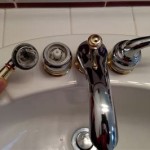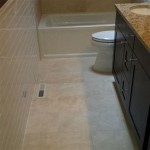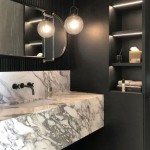Triangle Corner Bathroom Sinks: Space-Saving Solutions for Compact Bathrooms
Triangle corner bathroom sinks offer a practical and aesthetically pleasing solution for optimizing space in smaller bathrooms or powder rooms. These sinks are specifically designed to fit snugly into the often-underutilized corner spaces, thereby maximizing available floor area and enhancing the overall functionality and layout of the bathroom. This article explores the various aspects of triangle corner bathroom sinks, including their design considerations, material options, installation process, and advantages in comparison to traditional sink designs.
Design Considerations for Triangle Corner Sinks
The design of a triangle corner bathroom sink involves careful consideration of several factors to ensure both functionality and aesthetic appeal. The dimensions of the sink are crucial, as they must fit comfortably within the corner without protruding excessively into the room. Typically, these sinks have a symmetrical triangular shape to maximize surface area utilization within the corner. However, variations exist, with some designs featuring slightly asymmetrical forms for added visual interest or to accommodate specific plumbing configurations.
Depth of the sink is another critical element. A deeper sink bowl minimizes splashing and provides sufficient space for washing hands, while a shallower sink can save even more space. The choice depends on the intended use of the bathroom and the preferences of the homeowner. Smaller powder rooms, which primarily serve guests for handwashing, may benefit from a shallower sink, whereas frequently used bathrooms might require a deeper bowl for greater convenience.
The faucet placement is also an important design aspect. Corner sinks typically accommodate a single-hole faucet, which is mounted either directly on the sink or on the wall behind it. The faucet style should complement the overall design of the sink and the bathroom. Consider the reach and height of the faucet to ensure comfortable use and minimize splashing. Wall-mounted faucets offer a clean, modern look and can free up counter space, but they require more extensive plumbing preparation.
Furthermore, the design must address plumbing access. Since the sink is situated in a corner, accessing the pipes and drain may be more challenging than with traditional sinks. The design might incorporate features such as removable panels or strategically placed access points to facilitate maintenance and repairs. Consideration should also be given to the aesthetic treatment of the plumbing; exposed pipes can be concealed with decorative covers or treated as design elements themselves, depending on the style of the bathroom.
Finally, the overhang of the sink is important. Sufficient overhang past the cabinet (if any) allows for comfortable use. Too little overhang makes using the sink awkward. Too much overhang can create tight spaces. Ergonomic design dictates an overhang that matches the typical stance and reach of the user.
Material Options and Durability
Triangle corner bathroom sinks are available in a wide range of materials, each offering distinct aesthetic qualities and performance characteristics. The choice of material impacts the sink's durability, maintenance requirements, and overall cost. Some of the most common materials include:
Porcelain: Porcelain is a popular choice due to its durability, affordability, and ease of cleaning. It is resistant to stains and scratches, making it suitable for high-traffic bathrooms. Porcelain sinks are typically coated with a glossy enamel finish, which gives them a bright, clean appearance. However, porcelain can be brittle and prone to chipping if subjected to heavy impact.
Vitreous China: Vitreous china is a type of porcelain that has been fired at a higher temperature, resulting in a denser, more durable material. It is more resistant to staining and scratching than standard porcelain and offers a smoother, more refined finish. Vitreous china sinks are a good option for those seeking a balance between affordability and quality.
Stone: Natural stone options, such as granite, marble, and travertine, provide a luxurious and unique look. Each stone sink has its own distinctive veining and color variations, making it a one-of-a-kind piece. Stone sinks are durable and can withstand daily use, but they require regular sealing to prevent staining and water damage. They also tend to be more expensive than porcelain or vitreous china sinks.
Stainless Steel: Stainless steel sinks offer a sleek, modern aesthetic and are highly durable and resistant to rust and corrosion. They are easy to clean and maintain, making them a practical choice for busy bathrooms. However, stainless steel sinks can be prone to scratching and may show water spots and fingerprints. The sound of water running in a stainless steel sink can also be louder than in sinks made of other materials.
Glass: Glass sinks, often made of tempered glass, provide a visually striking and contemporary look. They are available in a variety of colors and textures, allowing for considerable customization. Glass sinks are durable and easy to clean, but they can be susceptible to scratches and chips. They also tend to be more expensive than other material options.
The choice of material should be based on the homeowner’s aesthetic preferences, budget, and the expected level of use and maintenance. Regardless of the material chosen, it is important to ensure that the sink is properly installed and cared for to maximize its lifespan and maintain its appearance.
Installation Process and Considerations
Installing a triangle corner bathroom sink requires careful planning and execution to ensure a secure and functional installation. The installation process typically involves the following steps:
Preparation: Before starting the installation, ensure that the necessary tools and materials are on hand. This includes a level, measuring tape, drill, screwdriver, wrench, plumber’s putty, silicone caulk, and appropriate plumbing fittings. Turn off the water supply to the bathroom and disconnect the old sink, if one is present.
Mounting: Determine the desired height for the sink and mark the location for the mounting bracket or hardware. Most corner sinks are wall-mounted, requiring the use of sturdy brackets or anchors to support the weight of the sink. Ensure that the mounting hardware is securely attached to the wall studs for maximum stability. Some corner sinks may also have leg supports for added reinforcement.
Plumbing Connections: Connect the water supply lines to the faucet, using appropriate fittings and plumber’s tape or putty to ensure a watertight seal. Install the drain assembly and connect it to the drainpipe. Ensure that all connections are tight and leak-free. It may be necessary to adjust the position of the pipes to align with the sink's drain.
Sealing: Apply a bead of silicone caulk around the perimeter of the sink where it meets the wall to prevent water from seeping behind it. Smooth the caulk with a wet finger or a caulking tool to create a neat, waterproof seal.
Testing: Turn the water supply back on and check for leaks around the faucet and drain connections. If any leaks are detected, tighten the connections or reapply plumber’s tape or putty as needed. Allow the caulk to dry completely before using the sink.
Professional Installation: While it is possible to install a triangle corner bathroom sink as a DIY project, it is often advisable to hire a professional plumber, especially if there are any complications with the plumbing or if the installation requires modifications to the existing water supply or drain lines. A professional plumber can ensure that the sink is installed correctly and safely, and that all plumbing connections are properly sealed.
When installing a corner sink, accessibility to the shut-off valves should be maintained. In the event of a leak or necessary repair, quick and easy access to the shut-off valves is essential to minimize water damage and facilitate the repair process.
Advantages of Triangle Corner Sinks
Triangle corner bathroom sinks offer several advantages over traditional sink designs, particularly in smaller bathrooms or powder rooms:
Space Saving: The primary advantage of a corner sink is its ability to maximize space in smaller bathrooms. By fitting snugly into a corner, it frees up valuable floor space, making the room feel less crowded and more functional. This is especially beneficial in bathrooms where space is at a premium.
Aesthetic Appeal: Corner sinks can add a unique and stylish touch to a bathroom. Their unconventional shape and placement can create a focal point and enhance the overall design of the room. They are available in a wide variety of styles and materials, allowing for customization to suit any aesthetic.
Improved Traffic Flow: By positioning the sink in a corner, it can improve the flow of traffic in the bathroom. This is particularly useful in narrow bathrooms where a traditional sink might obstruct movement. A corner sink allows for easier navigation and reduces the risk of bumping into the sink.
Versatility: Triangle corner sinks are versatile and can be installed in a variety of bathroom configurations. They are suitable for both residential and commercial applications and can be used in new construction or renovation projects. They can also be paired with a variety of faucet styles and accessories to create a customized look.
Cost-Effective: In some cases, installing a corner sink can be more cost-effective than installing a traditional sink, especially if it eliminates the need for extensive plumbing modifications or structural changes. They can also be more affordable than larger, more elaborate sink designs.
In conclusion, triangle corner bathroom sinks provide a practical and aesthetically pleasing solution for maximizing space and enhancing the functionality of small bathrooms. Their unique design, versatile materials, and ease of installation make them a popular choice for homeowners and designers alike.

Tulla Bathroom Republic

Katrine Willesden Bathrooms

Small Wall Mount Corner Bathroom Sink And Faucet Combo With Overflow Triangle Wh

Elecwish White Ceramic Bathroom Sink Triangle Wall Mount Corner With Single Faucet Hole And Overflow Com

Triangle Sink Small Solid Surface Bathroom Corner Cabinet Wall Hung Wash Basin China Made In Com

Ceramic Triangle Basin Space Saving Corner Wall Hung China Bathroom Sink Made In Com

24 Benton Collection Thomasville Corner Bathroom Vanity Model Gd Bentoncollections

Washing Hand Corner Counter Bathroom Basin Cabinet Faucet Accessories Set Wash Combination Small Apartment Triangle Face Space Aluminum Lazada

Wall Mounted Corner Vanity Triangular Single Sink Mirror Metal Frame Bath With Door Clearhalo

Small Wall Mount Corner Bathroom Sink And Faucet Combo With Overflow Triangle Wh
Related Posts






